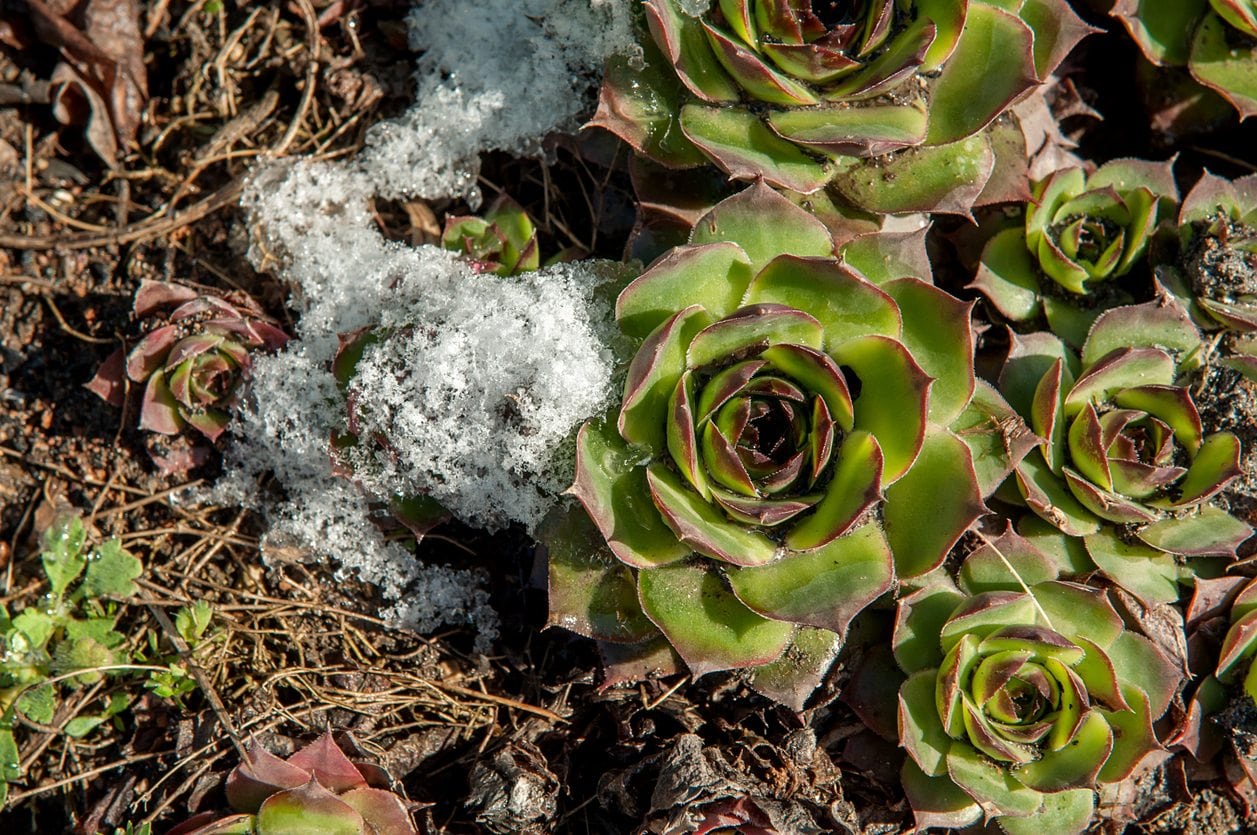Cold Hardy Succulents: Tips For Growing Succulents Outside In Winter


Growing succulents as houseplants is becoming more popular with indoor gardeners. Many of these same gardeners are not aware of cold hardy succulents to grow outside. Read on to learn more.
What are Hardy Succulents?
Many people are intrigued by the unusual plants that are unique to them and they are certainly appreciative of the low maintenance needed by succulent plants. As they impatiently wait for temperatures to rise so indoor (soft) succulents can move out to the deck or porch, they could be planting cold hardy succulents to liven up the outside beds. Cold hardy succulents are those that are tolerant of growing in temperatures that are freezing and below. Like soft succulents, these plants store water in their leaves and need much less watering than traditional plants and flowers. Some cold tolerant succulents live happily in temperatures below 0 degrees F. (-17 C.), such as those growing in USDA hardiness zones 4 and 5. How cold can succulents tolerate, you may ask? That’s a good question. Some sources say that many cold tolerant succulent plants flourish after living through winters with -20 degrees F. (-29 C.) temperatures.
Cold Tolerant Succulent Plants
If you’re interested in growing succulents outside in winter, you’re likely wondering how to choose the plants. Begin by looking for sempervivum and stonecrop sedums. Sempervivum may be familiar; it’s the old-fashioned hens and chicks that our grandmothers often grew, also known as houseleeks. There are a few online sites and catalogs that carry them. Check with your local nursery and garden center. The common name of stonecrop reportedly comes from a comment stating, “The only thing that needs less water to survive is a stone.” Funny, but true. Keep in mind when growing succulents outside, or growing them anywhere else, water is not your friend. It is sometimes challenging to relearn watering techniques that have developed over many years, but it is necessary when growing succulents. Most sources agree that too much water kills more succulent plants than any other reason. Jovibarba heuffelii, similar to hens and chicks, is a rare variety for the outdoor succulent garden. Jovibarba specimens grow, multiply themselves by splitting, and even flower in the proper outdoor conditions. Delosperma, the ice plant, is a succulent groundcover that spreads easily and offers beautiful blooms. Some succulents, like Rosularia, close up their leaves for protection against the cold. If you’re looking for the most unusual specimens, research Titanopsis calcarea – also known as Concrete Leaf. Sources are inconclusive about how much cold this plant can take, but some say it can be overwintered in zone 5 with no problem.
Growing Succulents Outside in Winter
You’re probably wondering about growing succulents outside in winter with the moisture that comes from rain, snow, and ice. If your succulents are growing in the ground, plant them in a base of perlite, coarse sand, coarse vermiculite, or pumice mixed with half peat moss, compost, or cactus soil. If you can add additional drainage by planting the beds on a slight slope, even better! Or plant cold tolerant succulent plants in containers with drainage holes that can be moved out of heavy rains. You may also attempt to cover outdoor beds.
Sign up for the Gardening Know How newsletter today and receive a free copy of our e-book "How to Grow Delicious Tomatoes".

Becca Badgett was a regular contributor to Gardening Know How for ten years. Co-author of the book How to Grow an EMERGENCY Garden, Becca specializes in succulent and cactus gardening.